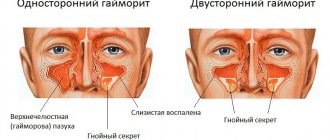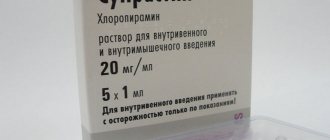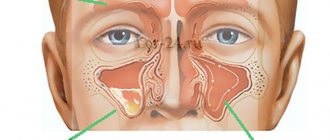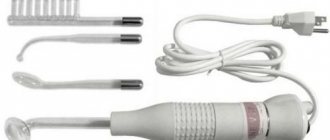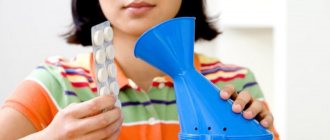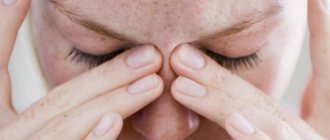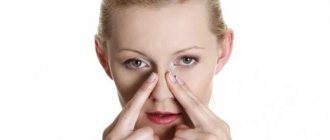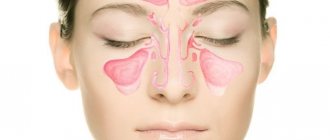What is sinusitis and how is it formed? The main causes?
Sinusitis is an inflammation of the mucous membrane of the maxillary sinus. Depending on the clinical manifestations and duration of this inflammatory process, sinusitis is divided into acute and chronic, but we will talk about this a little later. Inflammation occurs against the background of pathogenic microflora entering the maxillary sinus. This could be bacteria, viruses, fungal infection, etc. The main route of infection is the upper respiratory tract. Often the infection enters the sinus through the roots of diseased teeth, causing odontogenic sinusitis, the treatment of which is mainly surgical.
We come into contact with infections every day. However, not everyone suffers from sinusitis. It is necessary to understand that for the development of the inflammatory process in the maxillary sinus, in addition to external pathogens, local predisposing factors are also of great importance:
- Firstly, it is a weakening of local and general immunity.
- Secondly, these are anatomical changes, for example, a deviated nasal septum.
- And thirdly, these are other diseases of the nasal cavity. Such as nasal polyposis, chronic hypertrophic rhinitis, chronic adenoiditis, diseased, carious teeth.
The combination of these factors leads to the development of sinusitis.
How to understand that a patient has developed sinusitis?
To make it easier to understand the clinical picture of sinusitis, let’s look at the local and general symptoms of the disease.
Local symptoms of sinusitis
First of all, complaints of difficulty in nasal breathing and a feeling of nasal congestion appear. After some time, the patient begins to notice that he has ceased to smell. A discharge from the nose gradually appears. In the early stages it is a clear mucous liquid, and then it acquires a mucopurulent, viscous character. The patient experiences headache and pain in the affected sinus area. When tilting the head or making sudden movements, the pain intensifies.
Due to nasal congestion, the patient is forced to constantly breathe through the mouth, which causes dryness and discomfort in the throat. Often there are complaints of a feeling of congestion, shooting pain in the ears, which is also associated with the transition of the inflammatory process to the nasopharynx, where the anastomosis of the internal auditory tube is located. Discharge from the nose forces the patient to constantly use handkerchiefs. This creates a characteristic maceration of the skin in the area of the vestibule of the nose, noticeable to the doctor.
Procedures for sinusitis: essence, effectiveness and contraindications
Sinusitis usually occurs as a result of a cold or flu, and its consequences are life-threatening. Entrust the treatment of sinusitis to a specialist, otherwise self-medication can lead to meningitis.
The main help in the fight against the disease will be procedures for sinusitis.
Let's look at some of them.
Sinus puncture is the most common procedure if antibiotics and local treatment do not bring the desired result. What is a puncture? The specialist uses a syringe to draw pus from the sinuses.
A puncture is performed under local anesthesia, since this intervention is quite painful.
After drawing out the pus, the sinuses are washed with special solutions (furatsilin or saline), after which an antibiotic is injected into the nasal cavity.
Despite the fact that the procedure is extremely unpleasant, it is considered one of the most effective, since the pus goes away and the symptoms of the disease go away.
Another procedure for sinusitis is nasal rinsing . This procedure assumes a horizontal position of the patient. At this time, the specialist inserts a catheter into the nasal sinuses and passes the solution through it. The procedure is effective, since the patient’s breathing becomes easier almost instantly, and the headache goes away due to the outflow of pus. Unlike puncture, one procedure is not enough - 5-7 sessions are needed to restore breathing and get rid of symptoms.
How can you rinse your nose with sinusitis at home? At home, use a saline solution to rinse the nose. In addition to it, green tea and herbal decoctions - elecasol, St. John's wort, chamomile, and string - are excellent. To do this, pour 1 teaspoon into 1 glass of hot water and cool to room temperature. Preferences for medicinal herbs should be given depending on the absence of allergies.
A popular method for treating sinusitis is nasal rinsing using the liquid displacement method (“cuckoo”) .
This effective procedure is almost identical to regular nasal rinsing, is used in cases of mild, non-advanced forms of sinusitis, and is quite painless.
This procedure got its name due to the fact that while rinsing the nose you need to say “ku-ku”.
Despite this humorous mechanism, patients note improvement after the first procedure. The solution used to rinse the nose is mixed with purulent secretion and accelerates its exudation, after which relief occurs and the headache goes away.
Types of procedures
X-ray UHF
Inhalations for sinusitis - procedures using natural components of plant origin, allow you to extinguish the inflammatory process. The only contraindication to the use of this procedure for sinusitis is intolerance or sensitivity to the herbal components that are used for inhalation. At home, garlic, horseradish, lavender, and propolis are usually used for inhalation.
It is worth noting the effectiveness of thermal procedures for sinusitis .
Only a specialist can recommend them; in no case should you use thermal procedures without his recommendation - this can lead to complications.
If the doctor has prescribed warming up the nasal sinuses, then the easiest way is to warm them with an egg or loose cereal wrapped in a bag.
Recently, pulsating heat treatment has become popular. Pulsating heat can be obtained using a regular hairdryer - simply by directing a stream of warm air to the nose area for 15-20 minutes.
It is important to know
Contraindications to thermal procedures for sinusitis are polypous sinusitis, high body temperature and nosebleeds.
To enhance the effect of treating sinusitis with medications, laser therapy . This type of therapy helps eliminate inflammation. In case of advanced sinusitis, you can combine acupuncture and the use of dietary supplements . As a rule, the duration of such procedures lasts about 2 weeks, but it all depends on the severity of the disease.
To treat chronic sinusitis, diadynamic currents, electrophoresis, microwave therapy, mud treatment, aerosols and inhalations are used.
What types of sinusitis exist? How are they different?
There are many classifications of sinusitis. As we have already told you, the main types are acute and chronic sinusitis. The acute process is manifested by inflammation of the maxillary sinus and lasts up to a month. At the same time, the patient had never previously presented with the complaints that were described, had not suffered from sinusitis, or had been sick for a very long time. Usually, if a patient has not been treated for more than a month or has not received full treatment, then we can talk about the disease becoming chronic.
If complex treatment is started in a timely manner in the acute period, then sinusitis can be treated quite effectively at the level of outpatient treatment. But if the patient has developed a chronic process, then conservative treatment will only give temporary results. The symptoms of the disease will be smoothed out during treatment and will disturb the patient to a lesser extent, but will not completely disappear. And short-term periods of improvement will be replaced by exacerbation. Unfortunately, treatment of chronic sinusitis is only possible through surgery.
Treatment of sinusitis with laser
Laser therapy is an innovative technology for the treatment of chronic sinusitis, which allows you to achieve truly phenomenal results. The essence of this method is that the laser beam causes microburns on the surface of the mucous membrane of the nasal cavity and maxillary sinus, which, however, are not felt at all. Due to this, pathogenic bacteria die and recovery occurs.
The laser stimulates regenerative and repair processes in the mucous membrane, increases local immunity, normalizes the secretory function of goblet cells and has many other useful properties.
Moreover, laser therapy has a number of advantages over surgical treatment:
- the procedure is painless;
- not accompanied by incisions;
- the treatment is completely bloodless;
- short postoperative period;
- minimum complications.
To achieve maximum effect, several laser therapy sessions are necessary. The method is suitable for all patients, except those with cancer and hematological diseases.
Are there differences in symptoms and treatment methods for the disease in adults and children?
The only difference in symptoms between children and adults is that the child simply does not notice the first symptoms of the disease and does not understand that he has sinusitis. Parents should be vigilant, pay attention to the child’s behavior and complaints. If a child has decreased activity, he snores, breathes through his mouth, has a stuffy nose, fluid flows from the nose and has an increased body temperature, then the first symptoms of the disease can be suspected. This is a reason to contact an ENT doctor. Sinusitis in children is less common than in adults, and this is due to the fact that the sinuses begin to develop only with age. The maxillary sinuses in children, although small, can also become inflamed. As a rule, the age at which sinusitis may appear in a child is 4-5 years.
The difference between treatment lies in drug therapy: the dosage of prescribed drugs and contraindications to them.
The essence of treatment using special techniques
Physiotherapy for sinusitis is prescribed in cases where, after drug therapy, the patient does not disappear:
- severe runny nose;
- nasal congestion;
- heaviness in the eyes and forehead;
- significant increase in temperature;
- constant migraine;
- general weakness;
- malaise;
- severe hoarseness of voice.
Before prescribing physiotherapy, diagnostics are usually carried out to determine the degree of advanced disease.
Therapy for sinusitis is long and complex. It includes many components. Antibiotics, vasoconstrictor nasal drops, anti-inflammatory drugs, antihistamines, analgesics, immunostimulants, and vitamins are usually used.
Before prescribing these medications, diagnostics are usually carried out to determine the extent of the disease. It includes culture of discharge from the nose and throat to determine sensitivity to antibiotics, rhinoscopy, diaphanoscopy, and ultrasound.
What are the consequences of untimely treatment of sinusitis?
We have already said that untimely and improper treatment of sinusitis can lead to chronic sinusitis. Also, untimely treatment can cause complications in other organs and systems, even death.
Purulent untreated sinusitis can lead to the fact that pus from the maxillary sinus passes through the thin orbital wall into the eye orbit. This can cause complications such as:
- cellulitis of the orbit
- retrobulbra abscess
- abscess of the veins of the orbit, etc.
These processes can lead to vision loss.
There are also complications of sinusitis such as:
- rhinogenic meningitis
- rhinogenic brain abscess
- rhinogenic thrombosis of the cavernous sinus
- rhinogenic sepsis, etc.
All these conditions are a threat to human health, and sometimes life, and require long-term treatment in a surgical hospital and intensive care unit.
Therefore, I repeat once again, timely contact with an ENT doctor and correctly selected therapy can avoid unwanted consequences and complications.
What is the most effective method of diagnosing the disease would you recommend to your patients?
Diagnosis of sinusitis is carried out in several stages. The first stage is directly contacting an otolaryngologist. The doctor will evaluate complaints, medical history and distinguish sinusitis from other similar diseases with similar symptoms. For example, nasal congestion occurs with allergic rhinitis or with a deviated nasal septum. The ENT doctor conducts a general examination of all organs and systems, an otorhinolaryngological examination, and an assessment of blood counts. If necessary, the doctor can take a swab from the nose and throat for bacteriological examination. In our clinic we use highly informative research methods: endoscopy, fiberoscopy and microscopy of the nasal cavity.
With endoscopy, you can see in detail whether there is pus in the nasal cavity, how widespread it is, from which anastomoses it spreads, assess the swelling of the nasal mucosa and exclude other causes that can cause sinusitis.
Patients are also shown an X-ray examination of the paranasal sinuses. According to indications, the doctor may prescribe an x-ray of the paranasal sinuses or a computed tomography scan. X-ray of the paranasal sinuses is a historical research method, but at the same time it has not lost any of its relevance. It is quite informative, and at the stage of primary diagnosis it helps the doctor understand which sinuses are inflamed and how much pathological content is in the sinuses. However, computed tomography, unlike x-rays, gives a more informative and detailed result, helps the doctor understand the cause of the disease, its spread, and see the violation of the anatomical structures of the nose and sinuses.
Traditional methods of treatment
Treatment of sinusitis without a puncture can be carried out at home. Traditional medicine comes to the rescue, the effectiveness and safety of its methods have been proven by time and more than one generation.
- Warming up. Warming therapeutic measures are a very effective way to combat harmful microorganisms during sinusitis at home. However, warming up should be resorted to only if you are completely sure that there is an outflow of pus from the sinuses, since high temperature can aggravate the situation due to even greater suppuration. Most often, salt or eggs are used to warm up the sinuses. To do this, salt calcined in a frying pan is poured into a fabric bag and applied to the sinuses. Eggs can be used without wrapping: they are simply boiled and applied to both sides of the nose.
- Inhalations. Inhalation procedures help relieve swelling of the mucous membrane and liquefy the contents of the maxillary sinuses. The essence of inhalation comes down to inhaling the vapor of a hot solution, which can be prepared from various medicinal components:
- decoctions of celandine, chamomile, calendula, yarrow;
- propolis solution, for the preparation of which 0.5 tsp is poured into 0.5 liters of boiled water. alcohol tincture of propolis;
- dry menthol, grains of which dissolve in boiling water;
- potatoes and eucalyptus. In this case, after the potatoes are completely boiled, several leaves of dry eucalyptus are added to it. It is necessary to inhale the vapors of the resulting decoction under a thick towel for 15 minutes.
- Drops. The most effective instillation agents are cyclamen and aloe juices. The medicinal properties of these plants are manifested in increased secretion of the nasal mucosa and paranasal sinuses.
- Tampons in the nose. In order to relieve swelling and disinfect the sinuses, tampons are used, soaked in a medicinal composition, which can be prepared at home. Most often, tampons are soaked in a mixture of propolis and sunflower oil. To prepare the medicine, frozen propolis is crushed and then melted in 2 tbsp. l. sunflower oil. The resulting mixture is simmered over low heat for a couple of minutes.
- Compresses. Also, treatment of sinusitis without a puncture includes compresses. Usually, at home, finely grated horseradish or black radish is used to prepare them. The pulp is wrapped in cloth and applied to problem areas. You can also use bay leaf, water with the addition of which is first boiled, and then a napkin is moistened in it. A warm napkin is placed on the bridge of the nose and forehead.
Is the treatment of sinusitis with folk remedies justified?
For some reason, many people believe that treatment with folk remedies is justified, that it is environmentally friendly and the most effective, but medications in the form of antibiotics are considered the enemy of the body. This opinion is fundamentally wrong, because when an inflammatory process occurs in the body and a focus of infection appears, folk remedies are not able to eliminate the cause itself. There is no folk remedy that could straighten a deviated nasal septum, which is often the cause of the development of sinusitis. The effectiveness of medications has been proven by scientific experience; each product undergoes a number of studies. Folk remedies have no evidence base and often simply have a “placebo effect.” Therefore, such “grandmother’s” treatment leads to a missed moment when a person could be cured and saved from complications. As a result, the disease can become chronic.
What is the YAMIK method in the treatment of sinusitis?
The YAMIK method was invented in Yaroslavl by Dr. V.S. Kozlov. The essence of the method is that the nasal cavity has an entrance through the vestibule of the nose and ends in the choanae where the nasopharynx begins. The YAMIK sinus catheter has two balloons: one balloon is inflated in the nasopharynx, and the other balloon is inflated in the vestibule of the nose - creating a sealed cavity in the nose. The catheter has three “windows”: the first two to inflate the back and front balloons, and the last one to extract pus from the nose. The syringe, which is inserted into the last “window”, plays the role of a pump. It creates negative pressure in the nasal cavity and pumps pus out of the sinuses. If necessary, at the end of the procedure, the doctor injects a special solution into the nasal cavity. The YAMIK method takes about 10-15 minutes.
Unlike puncture (“puncture”) of the sinus, the YAMIK method is a low-traumatic, non-invasive method for the treatment of rhinosinusitis. During puncture, there is always a risk of injury from the puncture needle to neighboring areas - the orbit, the soft tissues of the cheek. The YAMIK method allows you to avoid such complications.
On an outpatient basis, puncture of only the maxillary (maxillary) sinuses is usually performed. Since during acute sinusitis almost all sinuses (maxillary, frontal, ethmoid, sphenoid) can be inflamed, it is advisable to use the YAMIK method. In this case, unlike puncture, pus is evacuated from all sinuses, and medicinal substances are also injected into all sinuses. The YAMIK method eliminates trauma to the mucous membrane and bone structure of the nasal cavity, allows you to simultaneously evacuate secretions from several sinuses and deliver medicinal solutions into the cavities of the paranasal sinuses. In this regard, in uncomplicated cases, the patient can avoid taking antibacterial drugs orally. Also, the YAMIK method reduces the time of sanitation of the paranasal sinuses and speeds up the healing process. The YAMIK method is easily tolerated by patients. It can be used to treat children from seven years of age and pregnant women.
Treatment of sinusitis
The initial stage of therapy is to immediately relieve swelling. Only after the swelling is removed, it becomes possible to completely remove the fluid accumulated in the maxillary sinuses. This manipulation is performed exclusively by a doctor. In addition, the otolaryngologist prescribes a therapy method and sets the duration of treatment.
The main factors influencing the choice of therapy methods:
- general condition of the patient;
- severity of the disease;
- medical history;
- anatomical features of the structure of the patient’s nasal cavity.
As a result of the totality of data, a non-puncture, puncture or surgical method of treating sinusitis can be chosen. Modern methods of treating sinusitis should be comprehensive, including therapy using antibiotics.
Local therapy
Local treatment includes an antihistamine and anti-inflammatory complex with a mandatory fasting diet and dietary adjustments. Antibacterial therapy consists of puncture injection of antibiotics into the nasal cavity. With the additional introduction of a sinus catheter, the remission process accelerates.
Antibiotics used for local therapy can be in the form of drops or sprays:
- Polydex;
- Isofra;
- Bioparox;
- Polydex with phenylephrine;
- Neomycin.
In the complex of local therapy for adult patients, the doctor must introduce the corticosteroid drug Dexamethasone. A vasoconstrictor is also needed. To do this, use Vibrocil in the form of a gel, spray or nasal drops. The dosage of the drug and the frequency of administration are determined by the otolaryngologist.
First, swelling is eliminated with the help of vasoconstrictors - inhalations, sprays, drops for 3-5 days. The next stage is to introduce antibacterial drugs and anti-inflammatory drugs into the complex of measures. The duration of treatment depends on the form of the disease.
Systemic therapy
Includes oral antibiotics or a long course of injections for chronic forms of sinusitis. Frontal sinusitis also requires antibiotic injections. The otolaryngologist decides how long and how many injections to take.
Systemic treatment is carried out by groups of drugs:
- Betalactams. This group includes penicillins and cephalosporins.
- Azalides.
- Macrolides.
- Modern group of Fluoroquinolone.
If after three days of taking the drugs there is no improvement in the patient’s condition, the antibiotic is changed, since the type of microflora that has affected the mucous membrane is resistant to this group of the drug. Systemic therapy is used in case of infection of the upper respiratory tract:
- acute sinusitis of moderate severity of an extended nature;
- acute form of tonsillopharyngitis caused by the causative agent of streptococcal infection.
A possible side effect of taking antibiotics is an allergic reaction to the components, or addiction from microorganisms.
Liquefaction type of therapy
In case of thickening of fluid accumulating in the sinuses, complex thinning therapy is carried out using special sprays, syrups or tablets with mucolytic and antibacterial action:
- Fluimucil;
- Rinofluimucil;
- Sinuforte;
- Erespal;
- Fluditek.
All drugs belong to the auxiliary type of therapy and are not considered drugs that independently cure sinusitis.
Prevention of sinusitis “before” the disease and “after”
To prevent sinusitis, you must follow the basic rules of a healthy lifestyle. Carefully monitor your health and, at the first appearance of symptoms of the disease, consult an ENT doctor. To choose a method of prevention after an illness, first of all, you need to identify the initial cause that led to sinusitis.
If the cause is a bacterial infection (against the background of a weakened immune system), then prevention will be an active lifestyle, exercise, proper nutrition, and avoiding hypothermia. If the cause is polyps in the nose, a purulent cyst in the sinus, or a deviated nasal septum, then in this case the cause must be eliminated surgically.
No reason - no disease. Treatment of the cause is the best prevention for sinusitis.
